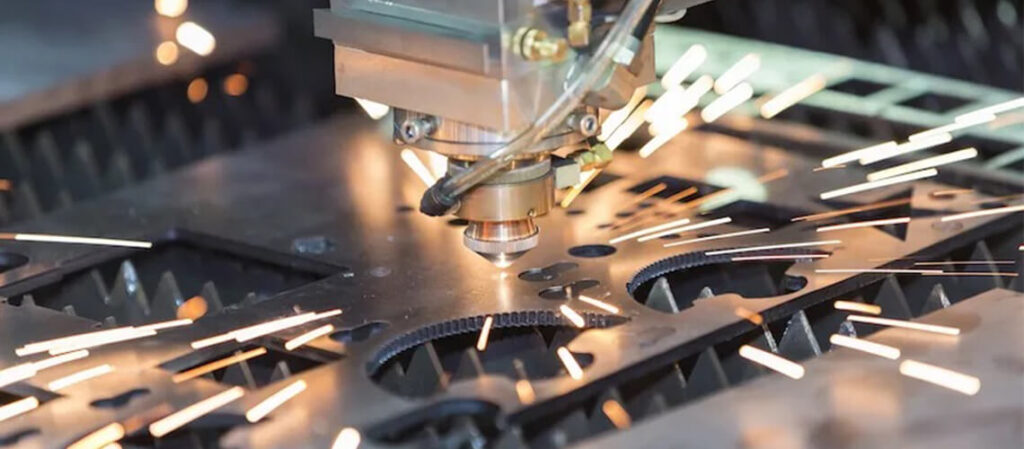Sheet Metal Dies Making: Step by Step
Sheet metal dies manufacturing is a vital process of metalwork that makes mass production of accurate, repeatable, and complicated metal parts possible. Sheet metal dies are highly tailored machinery operated on press machinery to press, form, bend, or fold sheet metal into the required form and size. From car body components to computer enclosures, sheet metal dies are totally indispensable in high-speed production with accuracy. A detailed analysis of Sheet metal dies manufacturing is given below.
At My Design Minds, we specialize in sheet metal dies manufacturing, delivering custom sheet metal die manufacturing services in Delhi NCR and globally. As precision sheet metal die makers, we serve industries such as automotive, electronics, and heavy machinery. We have team of professional`s with a deep understanding of materials, machining techniques, and industry-specific requirements.
What Are Sheet Metal Dies?
Sheet metal dies are-purpose tooling utilized in impression of some shapes on flat pieces of metal through mechanical deformation. Dies are coupled with presses, where punch and die both operate together to execute operations like cutting, bending, drawing, and shaping. Precision and die life also infuse life into the quality of the finished product as well as maximum manufacturing.

Sheet Metal Die Types
Sheet metal dies are a critical part of metal forming tools that help shape, cut, and bend sheet metal in modern manufacturing.
1. Cutting Dies
- Blanking Dies: Punch flat blanks in sheet metal.
2. Piercing Dies: Punch profiles or holes in the sheet.
Trimming Dies: Trim off excess material from formed parts.
3. Forming Dies
- Bending Dies: Bend sheet into an angle.
- Drawing Dies: Draw out the metal to shape, usually for cups or shells.
- Trimming Dies: Trim off excess material from formed parts.
4. Compound and Progressive Dies
Our facility is among the top progressive die manufacturing companies in India, known for delivering complex, multi-stage dies for high-volume production runs.
- Compound Dies: Do more than one operation (e.g., piercing and cutting) with one press stroke.
- Progressive Dies: Progressive die stamping is widely used in high-volume production due to its ability to perform multiple cutting and forming actions in one stroke. Consist of multiple stations; sheet is passed through each, and a various operation is done at each, in order to produce large runs.
- One of the most widely used techniques in high-volume metal part production is progressive die stamping, which allows multiple operations in a single press stroke.
Global and Export Capabilities
We also support high-volume sheet metal die production for export, meeting international standards for clients across the US, Europe, and the Middle East.
Materials Used in Die Making
The foundation of every successful manufacturing project lies in strong tool and die making, which involves precise material selection, machining, and heat treatment. Tool and die making requires selecting materials with excellent hardness, toughness, and wear resistance to ensure long-lasting performance. Material used in die making must be enough to perform and last. The materials used are:
|
Tool Steels (A2, D2, O1): Have good hardness, wear, and toughness properties. |
 |
|
Carbide: Applied to abrasives or high volume use due to its very high hardness. |
 |
|
Alloy Steels: Apply to low performance use or die components only. |
 |
The Process of Die Production
With the help of CAD and simulation software, precision die manufacturing ensures tight tolerances and consistent output.
1. Design and Engineering
- Product analysis: Product to be manufactured is analysed by engineers in terms of material, shape, tolerances, and size of production.
- Die design: The die is modelled on CAD software like SolidWorks, which is often used in the design phase of sheet metal dies, where feature information, clearances, and stages of work are all determined.
- Simulation: Pre-simulation of metal flow and deformation is done under the supervision of sophisticated software in order to identify errors such as wrinkling or tearing.
2. Material preparation
- Selection: Suitable tool steel or carbide to use.
- Cutting: Grinding cutting to punch and die block shape.
3. Machining and Fabrication
- CNC Machining: Faulty CNC mills and lathes machine the components of the die.
- EDM (Electrical Discharge Machining): Employed in case of complex shape, hardened material, and cutting edges.
- Grinding and Polishing: Offers accurate dimension and finishing surface.
4. Heat Treatment
- Hardening: Die pieces undergo heat treatment in order to attain required hardness.
- Tempering: Destroys brittleness and provides toughness.
5. Fitting and Assembly
- Component Assembly: Die blocks, guide pins, punches, and springs are assembled. Trial and Adjustment: Die is fitted on a press for trial running. Adjustment is made to provide proper fit, function, and product quality.
6. Surface Finishing and Treatment
- Polishing: Provides smooth finish for improved part finish and minimal wear.
- Coating: Nitriding or PVD coating may also be employed to provide wear resistance.
Critical Design Considerations
- Clearances: Proper gap between punch and die to allow for free cutting and minimum burrs.
- Stripping: Stripper to get workpiece from punch after being formed.
- Alignment: Reproducible, precise function is provided through precise guide bushings and pins.
- Maintenance: Easy maintenance and replacement of wear components when dies are structured in such a way.
Future Trends
- Simulation Software: Forecasts forming issues before, no more guessing.
- High-Speed Machining: Enables accuracy and cuts lead times.
- Additive Manufacturing: Used for complex die components or conformal cooling channels.
- Advanced Coatings: Extends die life and cuts downtime.
Conclusion
Sheet Metal Dies Manufacturing is a complex and important process and is the backbone of contemporary manufacturing. Die makers, through meticulous design, meticulous material selection, proper machining, and ongoing research and development, design and manufacture dies that yield cost-effective, duplicating, and efficient metal parts for differing purposes. With evolving technology, sheet metal die performance, accuracy, and efficiency are being improved on a regular basis to address increasing industry needs.
Precision die manufacturing plays a key role in delivering high-quality metal components with tight tolerances and consistent output.
